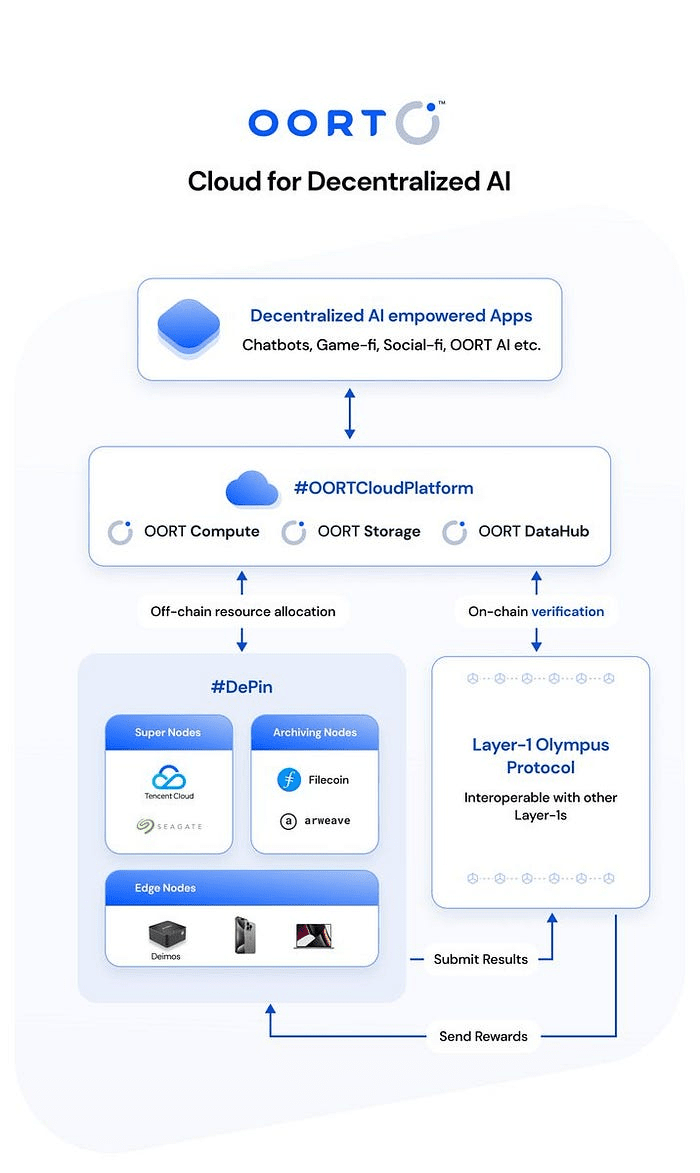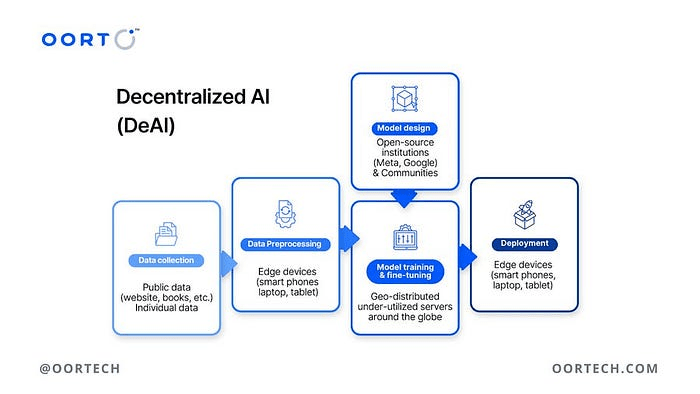In the past two years, if we talk about the hottest track in the capital market, it must be AI. Everyone's infinite imagination of AI technology has also sent Nvidia to the top of the US stock market. Among cryptocurrencies, the growth of AI concept tokens in the past two years is also particularly amazing. The continuous emergence of AI+Web3 projects has overwhelmed investors, and venture capital is also constantly increasing the investment to push up the bubble of the entire track.
When AI technology is used in Web3 applications, it can be combined with a wide range of application scenarios.
For example, in gamefi, AI can generate game avatars, equipment, etc.
Used in trading, AI can generate trading strategies, etc.
Used in on-chain data, AI can be used for data analysis;
Used in Defi, AI can generate investment decisions;
When used in the security field, AI can be used for risk identification, etc.
There are also some common functions for applications, such as code generation, AI dialogue, etc. The application scenarios are really too rich. Therefore, how to make Web3 help AI is more valuable.
The three elements of AI are "data", "model" and "computing power". Combining one of them with #Web3, or combining them with Web3, can generate new sparks. Many AI projects do this.
One of the things that blockchain is good at is providing an automated, trustless economic system. I personally think that the greatest value this feature can provide to AI is to use token incentives to promote the flow of AI elements and multi-party collaboration. It can be found that several AI projects with higher valuations are moving in this direction, especially the #depin +AI track.
In the era of fast-iterating large models, the growth of neural network parameter scale is likely to have diminishing marginal returns. Previously, the "world model" proposed by#OpenAIattracted widespread attention. In order for AI to understand the world well, the most critical point is how much content AI can learn, not just how many neurons and synapses the AI's "brain" has.
The content of these studies is the data element, one of the three elements of AI, or knowledge about the world. Currently, there are tens of thousands of data sets of various types in the field of AI, some open source, some paid, and many private data sets that can only be used in a limited scope due to privacy issues, sensitivity issues, or copyright issues.
After the rapid development of large models in recent years, most of the public data sets have been used, and the growth rate of incremental data is limited. Some studies have shown that by 2026, the world's high-quality language data will be exhausted. How to obtain incremental high-quality data in the future is a major problem we will face.
Perhaps collaboration can indeed solve the data hunger problem. There are already many AI data processing companies or crowdsourcing platforms on the market. But since it is a centralized operation, there must be certain management costs, and collaboration is something Web3 is very good at. Therefore, using Web3 to build a decentralized AI collaboration platform is the most logical way to combine AI+Web3.
Let's take the AI project @oortech as an example. OORT is a cloud computing platform built for decentralized AI, founded in May 2021. It aims to build a fairer and more efficient AI application infrastructure through a decentralized network, and bring openness and transparency to the multi-stage development of AI models to promote multi-party collaboration. Its goal is to create a democratized and popular AI development process.
First, a panoramic picture:
It can be clearly seen from the figure that OORT's core product is the intermediate cloud platform (OORT Cloud Platform), which includes: OORT Compute, OORT Storage, and OORT DataHub.
The cloud platform links Depin resources such as super nodes, storage nodes, and edge nodes, and implements interactive management through the Olympus protocol as Layer1. The decentralized cloud platform created can provide services for various AI applications, forming a complete AI ecological closed loop.
OORT Compute can integrate and utilize GPUs from around the world, providing cost-effective computing power for AI model training and inference because economic incentives help consolidate underutilized idle computing power.
OORT Storage integrates global storage servers such as Seagate and Tencent Cloud to provide a decentralized object storage solution with performance comparable to Amazon AWS S3, saving up to 60% in costs.
OORT Datahub provides data sets for AI projects. The data is provided and pre-processed by the OORT community from all over the world. The blockchain technology integrated in the product ensures that every step of the operation has a clear and permanent record. Through decentralized collaboration around the world, diverse data sets can be more easily obtained.
Current AI companies, such as OpenAI and Google, all build their own data centers and train models in a centralized manner. The entire development process is not open, and users cannot know what data they feed into the model. OORT can make every stage of AI development transparent through its cloud platform. Anyone in the world can share data through their personal computers and mobile phones to get rewards, or use mobile phones and computers to help complete data preprocessing, such as data labeling.
This processed data will then be updated to the OORT decentralized cloud platform, and the “hash value” of the dataset will be stored on the blockchain.
AI projects can use open source models from the community, and capable community members can participate in the design and contribute wisdom to model innovation. OORT Compute can also bring more cost-effective computing power to model training and fine-tuning, because it can tap into underutilized computing resources worldwide.
More importantly, the timestamps and data sets used in the training process are recorded on OORT's blockchain, and the entire process is transparent from beginning to end. During the model deployment phase, any AI application and software developer can deploy the model directly on their device, allowing them to use AI applications offline with convenience and security.

There are three main types of physical nodes in OORT's Depin network:
Super nodes (servers from partners such as Seagate and Tencent Cloud), which are responsible for tasks such as training AI models and storing large amounts of data;
Archive nodes (nodes from the Filecoin and Arweave networks), which are responsible for cold data storage and are mainly used to back up AI datasets.
Edge nodes (personal devices owned by users, such as the “Deimos” edge device customized for OORT, PCs, mobile phones) that are responsible for local data storage, data pre-processing, and running AI models to make decisions quickly.
As a public blockchain protocol, the Olympus protocol plays a role as a bridge to maintain multi-party collaboration in OORT. Olympus uses a consensus algorithm called "Proof of Honesty" (PoH) to connect nodes from all over the world in the OORT DePin network, ensuring that all nodes complete their assigned tasks honestly and transparently, and dynamically optimize and use network resources in a distributed manner.
Finally, let’s talk about the token economy. OORT introduces native functional tokens that can be used for product payment, staking, and governance voting. Users can choose the traditional payment model or pay with $OORT tokens. Users who pay with $OORT tokens will enjoy additional discounts. Users can also put tokens into the Defi staking pool to obtain staking rewards, or entrust tokens to node providers to obtain mining rewards.
Because OORT has created an economic closed-loop system, the flow of OORT tokens can help AI models continue to iterate. OORT is headquartered in the United States, and its core members come from world-renowned institutions such as Columbia University, Qualcomm, AT&T, JP Morgan, etc. At present, OORT's total financing amount has reached 10 million US dollars, and investors include: Taisu Ventures (i.e. Emurgo — Cardano Venture Arm), Red Beard Ventures (a fund funded by A16Z and Animoca Brands), Angelist, Trinity Venture Capital, Linkvc and Waterdrop Capital, as well as individual investors from institutions such as JP Morgan, Columbia University, Cornell University, Ausum Ventures and ISKER Group. At the same time, OORT has also received funding from Microsoft and Google. OORT links all#AIelements through the blockchain network, creating a decentralized closed-loop system for the entire process of AI model generation to application, so that the scalability and transparency of AI models are fully guaranteed.
Recently, OORT received funding from Microsoft, which shows that Microsoft is full of confidence in OORT's technical strength and development prospects and looks forward to its future performance.






